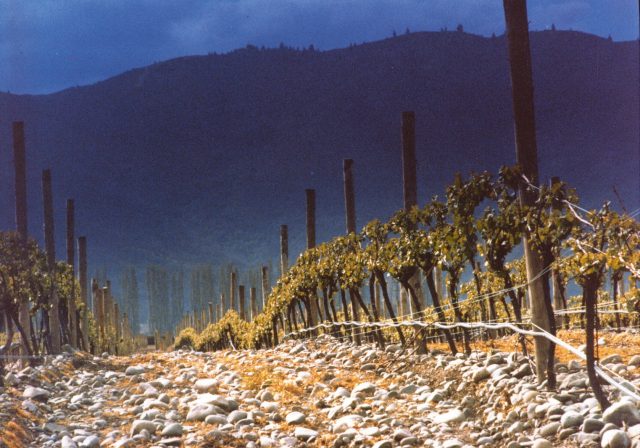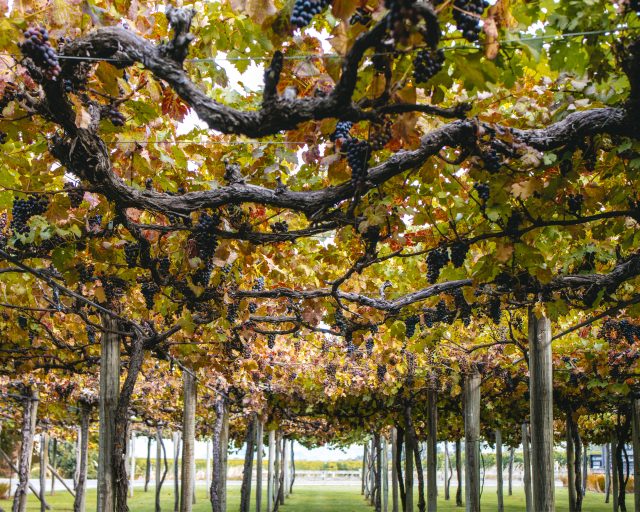This website uses cookies so that we can provide you with the best user experience possible. Cookie information is stored in your browser and performs functions such as recognising you when you return to our website and helping our team to understand which sections of the website you find most interesting and useful.
‘Consumers say they will buy sustainable, but price wins out every time’, says Hunter’s GM
Hunter’s GM Ed Macdonald tells db how the Marlborough Sauvignon Blanc producer balances the scales between sustainability and price point with its new lightweight bottles.

Hunter’s saves 45 tonnes on the weight of shipments across a full production year with its new lighter-weight bottles.
Launched for its 2023 Marlborough Sauvignon Blanc, the bottles weigh 390g, a significant reduction from the lightweight bottles Hunter’s already used for its 2022 vintage, which weigh 420g.
“There are lighter options,” Macdonald admits, “but they look terrible.”
The clever thing about this bottle, the Hunter’s general manager says, is “they look exactly the same” as those which came before.
Hunter’s has its own bottling line, something Macdonald says is “quite unusual for Marlborough now”. It is also a family-run business, and has remained so since its inception in the 1970s, meaning “we can make decisions a lot quicker”.
Being a family-run business comes with its perks, but the challenges emerge “when it requires capital”.
“Marlborough is one of the fastest growing wine regions in the world,” he says. As of September 2022, there were 26,559 hectares of Sauvignon Blanc in New Zealand, 23,834 hectares of which were located in Marlborough.

“When I was growing up in the late 90s and early 2000s, there were still plenty of sheep farms and cherries orchards around. They’ve all been ripped out now. Everything’s just Sauvignon Blanc, as far as the eye can see,” Macdonald says.
Producers are expanding their plantings “into cheaper land which is frost prone or flood prone, because they’re just desperate to keep going”, he says, but Hunter’s is on a different path. “It’s the corporates that are building out there,” he says, with the funds to keep buying up land — something which raises alarm bells among smaller producers.
“It’s making it more inaccessible for us because it keeps pushing the price up. Land is so expensive now, and grapes are so expensive. And as long as the demand keeps increasing, the prices are just going to keep going up.”
Hunter’s produces around 150,000 cases of wine a year, making it “medium-small by today’s standards”, according to Macdonald.
Big producers are pushing up land and grape costs, but their smaller margins are also lowering prices on retail shelves.
“Everyone’s terrified of this race to the bottom,” Macdonald says, voicing the fear among local Sauvignon producers that there will come a pint where “all of a sudden Sauvignon Blanc is a cheap laughing stock and no one wants it anymore”.
Producers are focusing on subregionality to counteract the work of large-scale brands and own label wines.
Appellation Marlborough Wine is a project which began in 2018 to introduce a trademark to safeguard Marlborough Wine, initially focused on Sauvignon Blanc. The organisation launched its first appellation map of Marlborough earlier this year, and is now expanding into other grape varieties grown in the region.

“The idea behind Appellation Marlborough is what you’d expect. It’s trying to take some of the positive points from DOCs and France and apply that to Marlborough,” Macdonald explains.
Grapes have to be 100% Marlborough grown in order for the wines to qualify, and all the wines are bottled in New Zealand, which the organisation says guarantees “absolute authenticity”.
Macdonald explains: “The reasoning behind it is that there is no bureaucratic control over Marlborough wine being bottled in Germany”, for example.
“So if I sent 20,000 litres to Germany to be bottled, and suddenly I ended up with 30,000 litres of bottled wine, if someone’s blended that with South African Sauvignon Blanc to fill it up and bring down the cost, no one would know.”
Bottling regulations like this are “excellent in theory”, he says, but cause issues when it comes to sustainability, as shipping in bulk — which can reduce CO2 emissions by as much as 40% — is unauthorised.
Lighter glass bottles therefore became the solution for Hunter’s. And with a 45-tonne saving on a year’s shipments, it’s a no brainer.
“From our perspective it’s pretty significant, and for our customers, who are paying for the freight, there are savings in their pockets as well,” the GM says.
Lighter weight bottles also don’t pose a threat to the quality perception of the wine, Macdonald argues. “If we cant to premiumise the product, we would use more label embellishments and a nicer cap, or put more into the story.”
With consumers, it’s always a balance with cost. On the supermarket shelves price is key, even for consumers who say they want to be more ecological.
“When you’re in the supermarket, and you’ve just bought that bag of frozen berries which was far more expensive than you hoped, and then you get to the wine section saying I need a bottle of wine, price wins out every time,” he says.
“that’s a difficult one when it comes to that sustainability story, getting the consumer to really grip on to that, because you’re still really competing with that price level,” he says.
Lightweight bottles are a solution to both problems, offering cheaper shipments and a lower carbon footprint, and bottling in New Zealand, as per Appellation Marlborough Wine’s requirements.
Competition from corporate companies with an excess of capital is still a threat, but Macdonald is interested to see how the dynamic between producers in Marlborough will play out. He says: “The next 12 months will be an interesting tell on whether it can be sustainable.”

